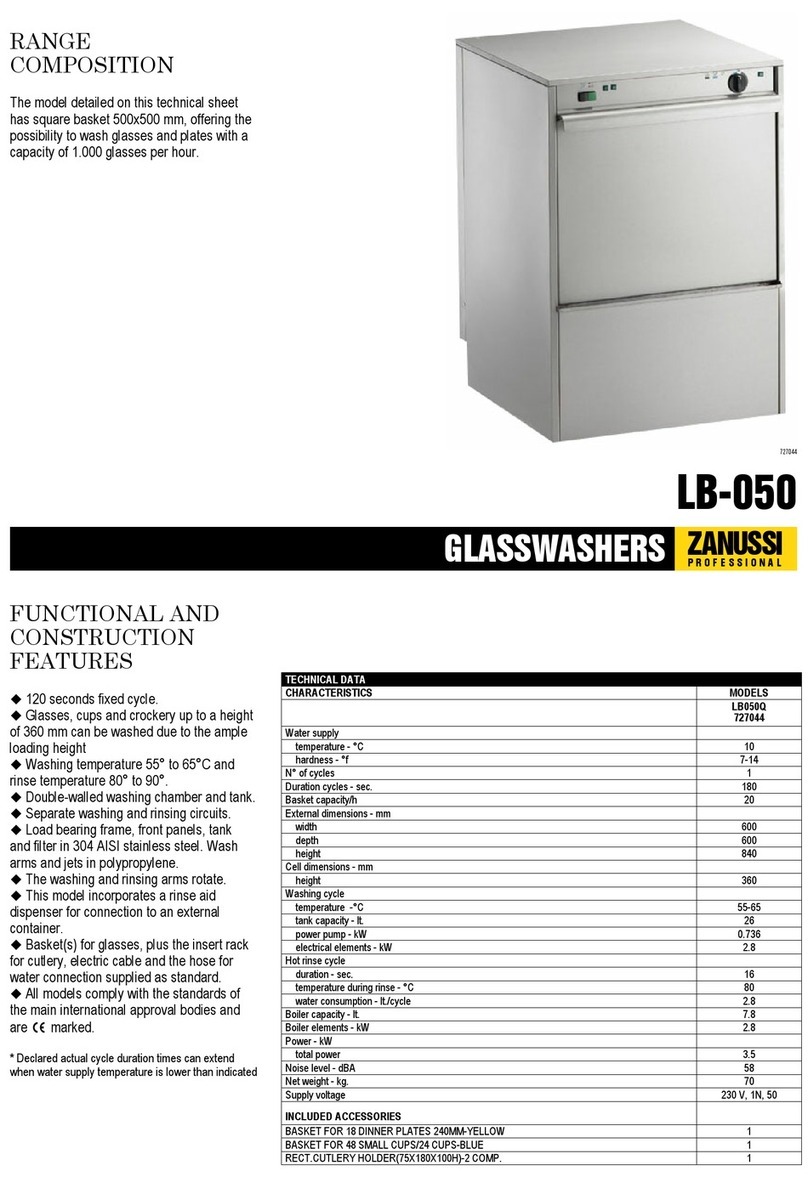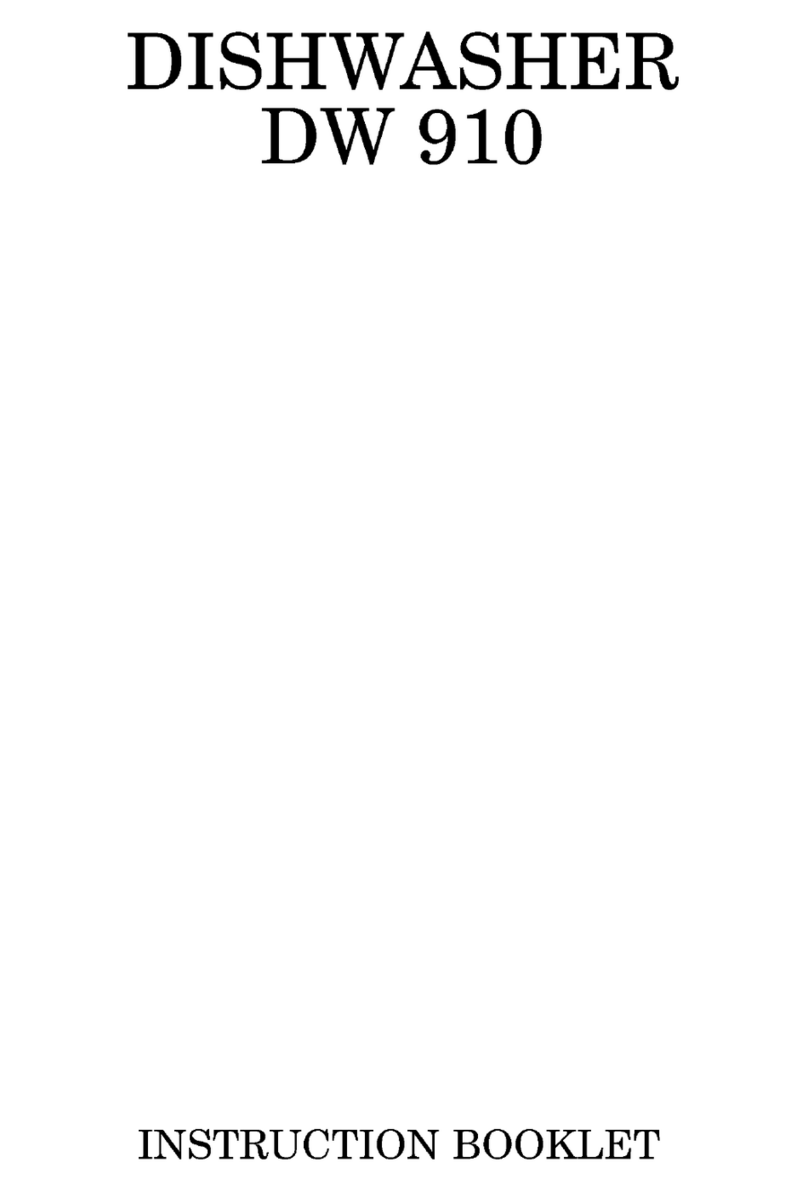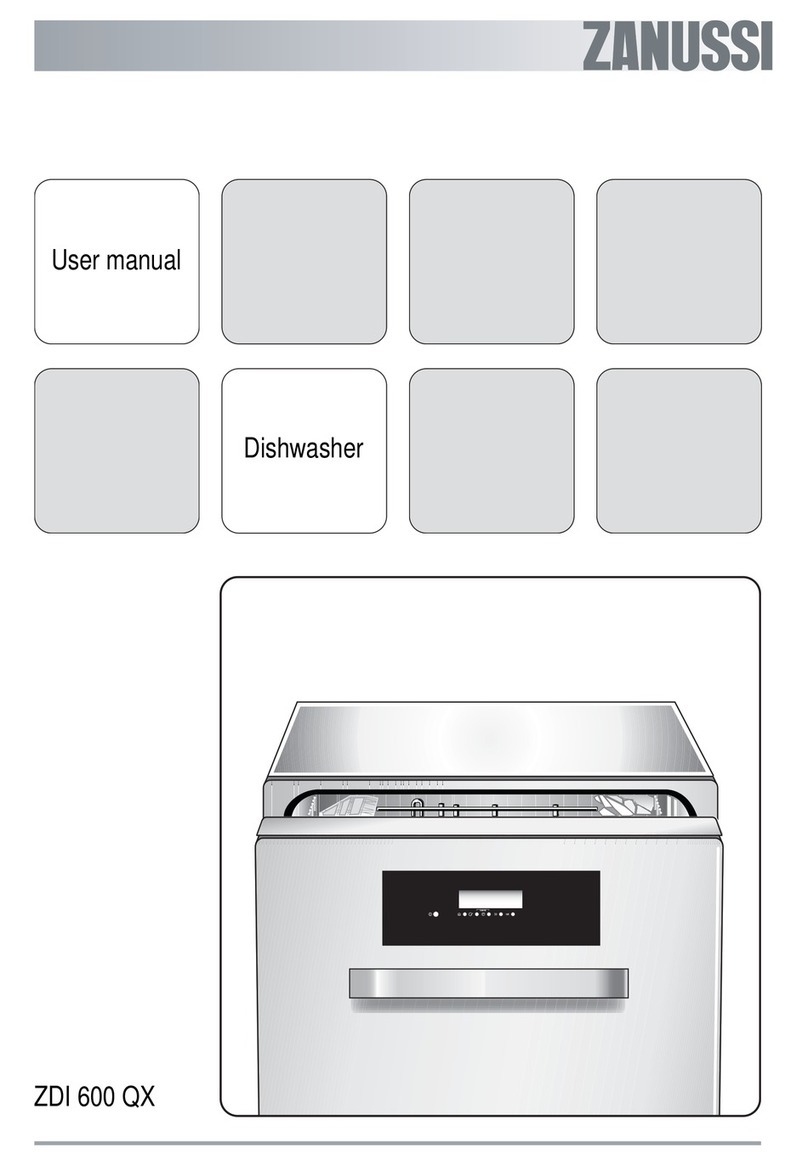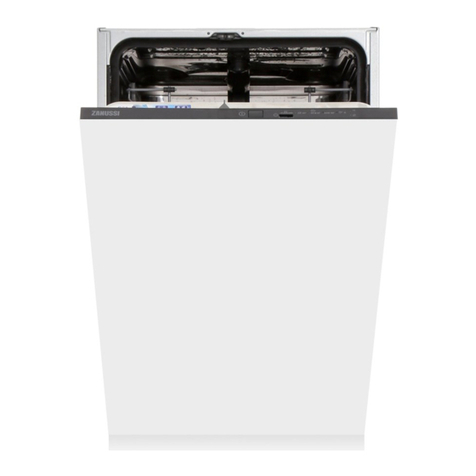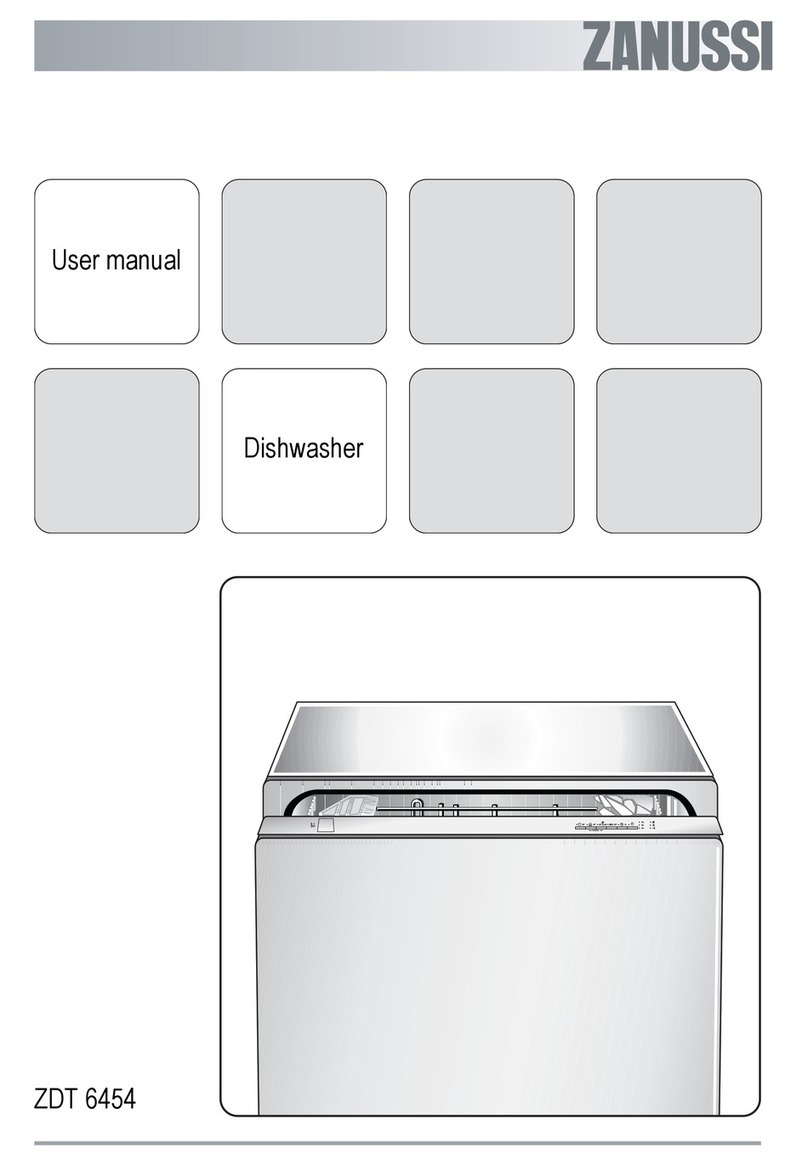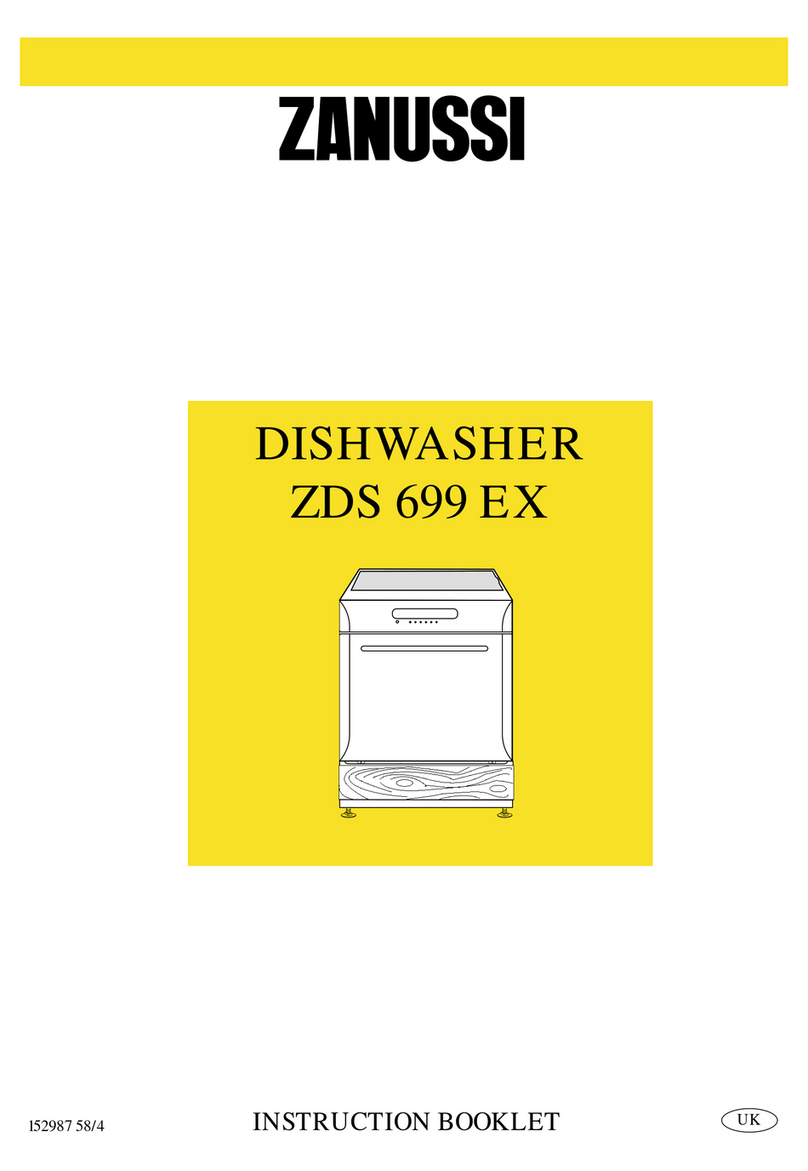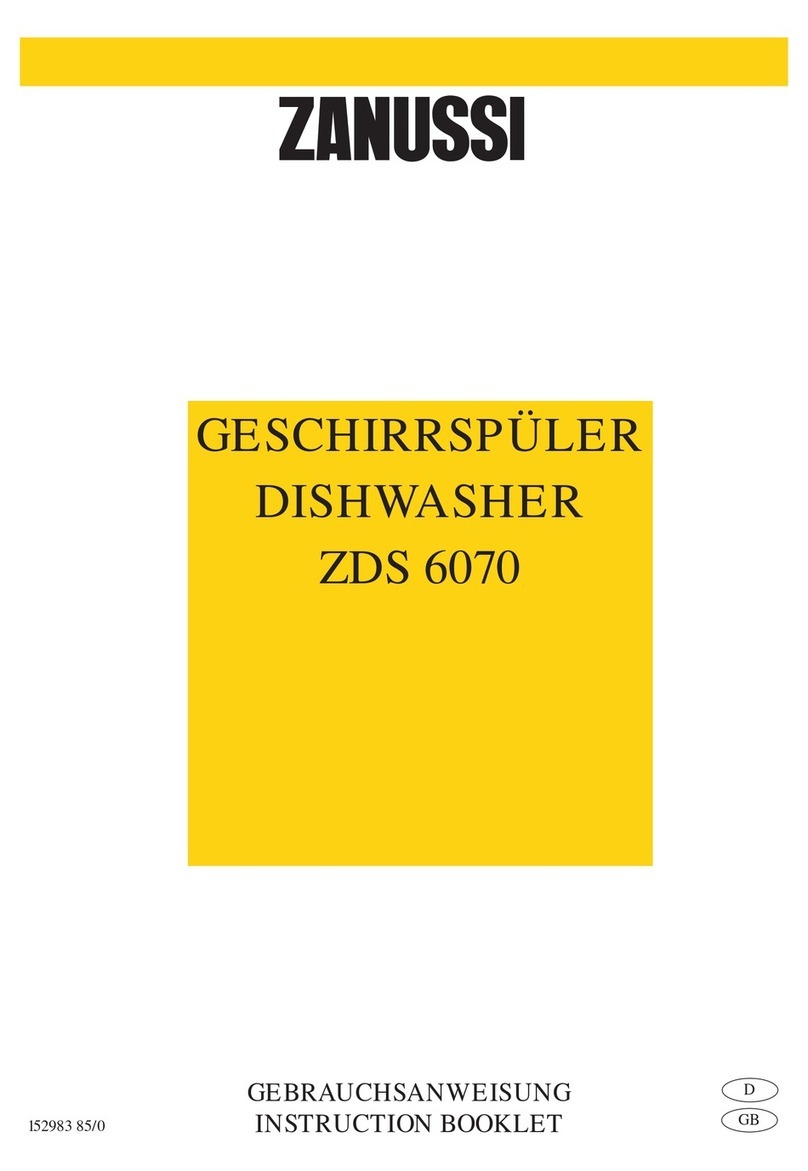Loading your appliance
Before placing dishes in the machine, remove any scraps of
food, to avoid clogging the filters and consequently reducing
the performance.
Do not load very small items which can fall through the
baskets.
Open the door and slide out the baskets to load the dishes.
The lower basket
The lower basket is designed to take saucepans, lids, plates,
salad bowls, cutlery etc.
Serving dishes and large lids should be arranged around the
edge of the basket, ensuring that the upper spray arm can turn
freely.
The two rear rows of prongs on the lower basket can be easily
lowered to allow you to load pots, pans and bowls.
To lower the prongs:
- Slightly pull them upward and let them drop down (see
picture).
- To bring them back to the standing position, just pull them up
again.
The cutlery basket
Long bladed knives stored in an upright position are a
potential hazard.
Long and/or sharp items of cutlery such as carving knives
must be positioned horizontally in the upper basket.
Take care when loading or unloading sharp items such as
knives.
Cutlery should be placed in the removable cutlery basket with
the handles facing downwards.
If the handles protrude from the bottom of the basket,
obstructing the lower spray arm, load the cutlery with the
handles facing upwards.
Mix spoons with other cutlery to prevent them from sticking
together.
Silver cutlery tends to go black
if mixed with steel cutlery.
Place it in the cutlery basket
separate from the others.
For best results we
recommend to use the cutlery
grids provided (if the size and
the dimensions of the cutlery
allow it).
The cutlery basket is in two
parts which can be separated
to give greater loading
flexibility. To separate the two
parts, slide them horizontally
in opposite directions and
pull them apart. To
reassemble, reverse the
procedure.
The upper basket
The upper basket is designed for plates (dessert plates,
saucers, dinner plates of up
to 25 cm in diameter), salad
bowls, cups and glasses.
Arrange items so that water
can reach all surfaces.
Glasses with long stems can
be placed upside down in the
cup racks.
Light items (plastic bowls
etc.) should be loaded in the
upper basket and arranged
so they do not move.
In case that plates are loaded in the upper
basket:
load them starting from the
rear positions of the
basket, tilting them
forwards and avoiding the
front positions near the
door.
Attention!
Before closing the door, ensure that the spray arms can
rotate freely.
Adjusting the height of the upper basket
If washing very large plates (over 27 cm and up to 32 cm in
diameter) you can load them in the lower basket after moving
the upper basket to the higher position.
To move to the higher position proceed as follows:
1. Move the front runner
stops (A) of the upper
basket outwards and slide
the basket out.
2. Refit the basket in their
higher position and
replace the stops (A) in
their original position.
When the top basket is in the
higher position it will only
take plates up to 20 cm in
diameter and you will not be
able to use the cup racks.
Attention!
After loading your machine always close the door, as an
open door can be a hazard.
4
Using your appliance

